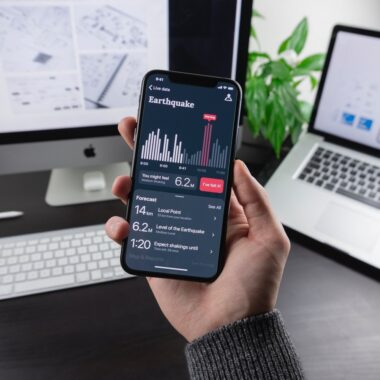How to monetize mobile applications: 4 ways to attract to your products

Mobile applications are created for different purposes. For some it may be a trial project, for others it’s a successful software product development process that seeks to increase brand awareness, but the task of most developers is still to make a profit. It is better to think about possible solutions to this issue before starting the project.
There is no ideal income model, but there are plenty of options to choose from. No matter what type of mobile application you decide to make, you can monetize almost any product.
From our experience working on software development projects, I can assure you that there are dozens of effective ways to make money on your application. But if we reject too specific and not quite legal, we can identify 8 most universal and proven models. Let’s look at them in more detail.
1. Pay Per Download
The classic and easiest way to monetize an app is when a user pays to download it from Google Play and the App Store. The big advantage of such a model for the developer is that he receives income at the same time when the user downloads his product. 70% of the profit from each purchase is received by the developer, and 30% is the commission of the application store.
However, the popularity of this approach is declining because its use has a number of disadvantages. The first and most obvious disadvantage is the reduction in the number of downloads and the reduction in audience reach, because not all users are willing to pay. Also, marketing costs increase, especially if there are competitors who offer an alternative for free.
Using such a monetization model is justified if you have a product with unique or in-demand features, marketing resources, and no competitors that offer the same features for free. For example e-commerce app for barbershops.

2. Freemium
The Freemium model assumes that the user can download the application and use it for free, but the functionality of the product is limited. If desired, it can pay for access to advanced functionality or additional premium content. It turns out to be a kind of hybrid model.
The advantage of this approach is to increase audience reach and the number of downloads, which has a positive effect on the ranking in application stores. The user gets the opportunity to learn the functionality of the application for free, and can make an informed decision whether to pay for advanced features or not.
The potential disadvantages of Freemium are the following:
- if you give users too many opportunities, they will have no incentive to pay for additional functionality;
- if, on the contrary, there are too few opportunities, users will be forced to pay almost immediately, which also reduces the motivation to buy;
- you need to demonstrate clear value and provide a good user experience for people to make payments.
3. In-App Purchases
One of the most widely used monetization strategies for mobile applications, which is especially popular in the field of mobile games. For example, players can buy additional decorative accessories for their character (clothes and weapons) or sets of resources (gold in Clash of Clans).
The main challenge is to find a balance between paid and free resources so that users are comfortable using your app for free, but at the same time, they were interested in making purchases.For example there are various example of best IoT cloud platforms where businesses pay for in-app purchases.
4. In-App Advertising
Ad serving is a major source of revenue for a very large number of applications on the market. There can be many options for implementing such a model in practice – in graphic (banners), text, native or video format.
The application itself in this case becomes free to download, which greatly increases the audience. There are many ad networks you can connect to to automatically start running your ads, such as Google AdMob. You can also ask the user to disable in-app advertising for an additional fee, thus combining several monetization options.
The main disadvantages of this model of monetization of applications are two: you need to attract a large number of users to make a normal profit, and you need to act carefully, because aggressive advertising can irritate users, and they will remove the application.
